The development of US artillery guns incorporating recoil systems in the early part of the 20th Century started off well but, by the time the US entered WW1, there were not enough guns available to equip the large army required and US industry was not in a position to produce them. As a result, the US had to rely on using British and French artillery pieces after the US entered the war in 1917. The more modern gun that the US designed just before WW1, the 3-Inch Gun M1916, turned out to be ill conceived and was found almost impossible for US industry to manufacture.
19th Century Field Guns
The muzzle loading 3-Inch Ordnance Rifle M1861 shown below was one of the most effective field guns during the American Civil War (1861-65) with a maximum range of 1,830 yds firing Hotchkiss or Schenkel shells. It not only outranged the smooth bore cannons used on both sides but was considerably more accurate. Unlike the cast iron or bronze smoothbore guns, the 3 inch rifle was made using wrought iron coils wrapped around a central mandrel that were then heat welded together to produce a much stronger gun. Many were subsequently converted to breech loaders which also involved boring them out to 3.2 inch to provide the new rifling required.
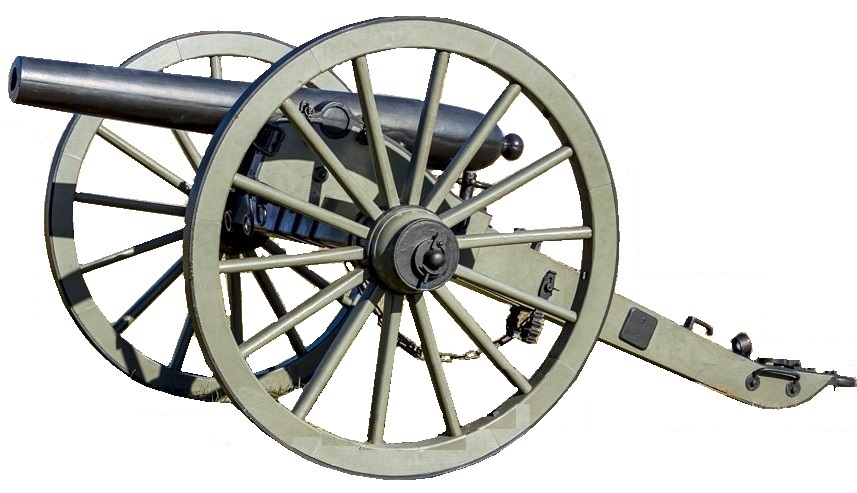
These guns were superceded by the breech loading 3.2-Inch Gun M1885 that was of built-up wrought iron construction (shrunk on wrought iron hoops) and featured a de Bange type screw breech. A few years later, this gun was slightly modified to form the jacket from a single forging rather than 4 separate parts to become the 3.2-Inch Gun 1890. The M1885 guns were used during the Spanish-American War in 1898 but the use of black powder cartridges created clouds of white smoke giving away their locations to the Spanish.
The 3.2-Inch Gun M1897 shown below was a modification of the M1890 field gun to enable it to use smokeless powder and was the first US gun to be made from steel rather than wrought iron. However, like its predecessors, it still used a fixed carriage without a recoil system. Although European countries had adopted smokeless powder at the beginning of the 1890’s, it took the US until the end of the decade to adopt their version for field artillery. Unfortunately, by the time the M1897 was introduced, it was effectively rendered obsolete when the French introduced the rapid fire Canon de 75 Mle 1897 in the same year that incorporated the first effective long recoil system.
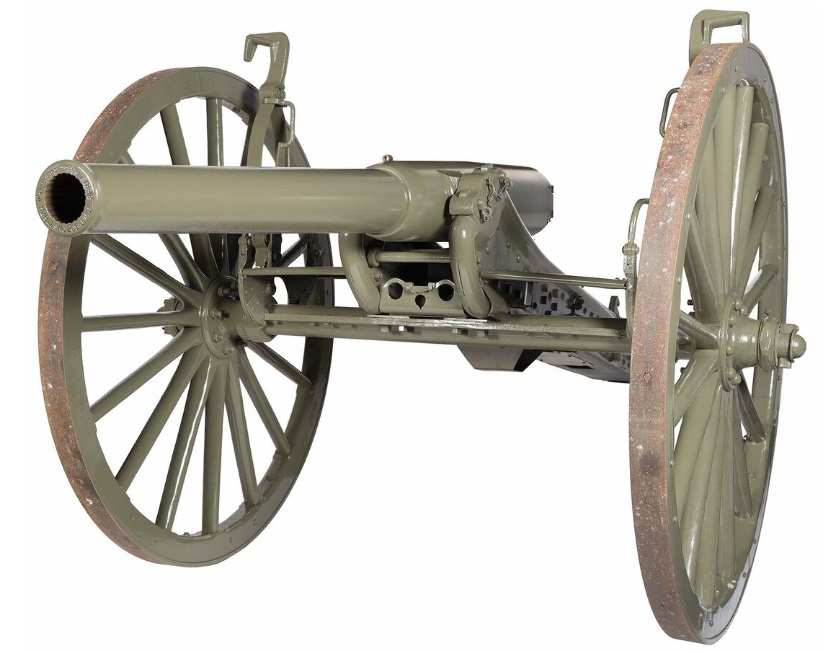
The First US Rapid Fire Field Gun
When the initial secrecy over the French gun was lifted, the US Ordnance Department quickly started work to produce a rapid fire field piece. Trials were carried out on guns with both short and long recoil systems with the latter proving to be the way forward. After further trials with a number of long recoil guns, the Ordnance Department narrowed its choice down to three long recoil systems: the Bethlehem No. 2, the Erhardt (a German gun), and the Ordnance Department’s model designed by Captain Charles B Wheeler. None of the guns were found to be completely satisfactory and so the Department created the new gun, designated the 3-Inch Gun Materiel M1902 shown below, by combining the best features of their design and the Erhardt gun.
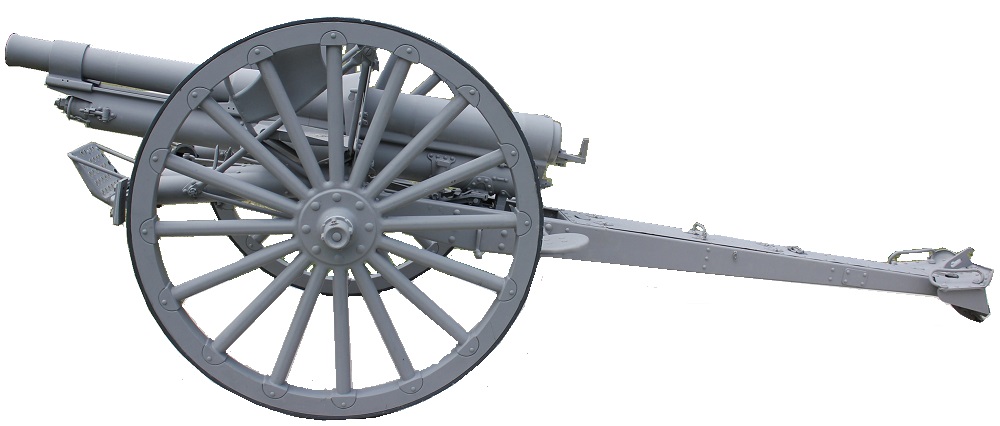
Modernisation of US Field Guns
In the first few years of the 20th Century following the experience of the Spanish-American War (1898), direct fire was considered to be the main mode of operation of field guns in the US. In 1904, the Ordnance Department started work to develop the heavier 3.8-Inch M1907 field gun and the 4.7-Inch M1906 siege gun shown below, both using a similar long recoil system. At this time, the choice of calibres in the US was based on shell weight with a 3 inch gun firing a 15 lb shell, a 3.8 inch firing a 30 lb shell, a 4.7 inch firing a 60 lb shell and, later on, a 6 inch firing a 120 lb shell.
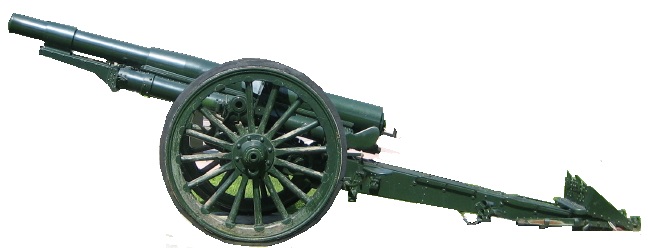
However, the emphasis on direct fire changed as a result of the Russo-Japanese War in 1904-05 where both armies eventually began to rely on the technique of laying guns indirectly behind cover to protect them from enemy fire. The technique of using telephones with forward observers to report corrections to the fall of shot was also adopted. As a result of this war, work started in the US to develop howitzers. Howitzers make use greater elevation angles so that the shells descend at a steep angle to be able to attack targets behind cover or fortifications. This work resulted in the development of the 3.8-Inch Howitzer M1905, the 4.7-Inch Howitzer M1908 and the 6-Inch Howitzer M1908 all using a similar carriage. The 6 inch howitzer is shown below from which it can bee seen that, unusually, the recoil system was located above the gun.
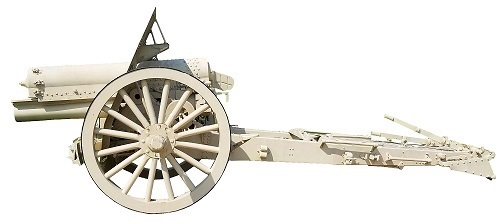
Reorganisation of US Artillery 1901
In the changes to the US Army by the Act of 2 February 1901, the seven artillery regiments were reorganized into the Artillery Corps divided into battery sized units called companies of Field Artillery and Coast Artillery. The Coast Artillery was responsible for coastal defence as well as operating the heavier siege weapons (6 inch and above). However, in 1907, the Artillery Corps was reorganized into the Field Artillery and the Coast Artillery Corps.
From 1903 to 1908, the Chief of Artillery oversaw both field artillery and coast artillery. After 1908, a general served as Chief of Coast Artillery which had a corps structure while the Field Artillery had a regimental structure but no chief. Prior to 1903, responsibility for developing new field guns lay with the Ordnance Department and it was they that had developed the M1902. The development of the new 3.8, 4.7 and 6 inch guns and howitzers benefitted from being led from a Chief of Artillery. However, after 1908 and until 1917, the Ordnance Department took on responsibility for developing new field guns that included the notorious 3-Inch Gun M1916 replacement for the M1902.
Development of 3-Inch Gun M1916
The 3-Inch Gun M1902 was never used in anger and ended up only being used for training purposes during WW1. However, prior to WW1, the Ordnance Department considered a 3 inch gun to be vital for the type of mobile warfare they expected in a future conflict and believed they could develop a much better gun than the M1902. Unfortunately, they tried to design the new gun to do everything possible. In particular, they designed it so that it could provide a maximum elevation of 53° and with 45° of on-carriage traverse compared with the 15° and 8°, respectively, for the M1902. The 3 inch gun was not intended to be a howitzer (no variable propellant charges) and therefore it was difficult to see the need for such a large elevation angle range. Similarly, there was no need for such a large amount of traverse provided especially for such a light field gun that could easily be traversed by larger angles by moving the spade when necessary. The result of this over specification was the need to use a complicated split trail and the need for a variable recoil system to stop the gun hitting the trail or ground at the higher elevation angles.
Following the passing of the National Defence Act of 1916 to greatly increase the size of the US Army, an order for 300 x M1916 guns was placed before the split trail carriage had actually been tested with the belief that any problems could be fixed during production. Even before the first gun was delivered, the decision was taken to change the calibre to 75 mm to allow it to use French ammunition. However, the biggest problem faced was with the variable recoil system. Unfortunately, above about 25°, it was found that not enough energy was stored in the recuperator springs during recoil to then allow the springs to fully return the gun to battery afterwards. To try to remedy this serious problem, a hydro-pneumatic recoil system was developed by Colonel Rimailho of Mle 1897 fame at the St. Chamond factory. The advantage of this hydro-pneumatic recoil mechanism was that it stored most of the recoil energy rather than dissipating it as heat and therefore retained enough energy to return the gun to battery at all elevation angles. The resulting carriage was designated the M1916MI. However, US industry found it difficult to build the new sophisticated recoil system and, as a result, no guns were completed until after the war ended by which time the gun was declared obsolete in favour of the M1897 of which there was a large US inventory.

US Artillery in WW1
By the time that the US entered WW1 in 1917, it had 374 x 3 inch M1902 guns, 40 x 3.8 inch guns and howitzers, 55 x 4.7 inch guns, 112 x 4.7 inch howitzers and 42 x 6 inch howitzers. This was enough for an army of 250,000 men but would not satisfy the requirements of the projected two million men needed for duty in Europe. Unfortunately, US industry at the time was simply not capable of producing enough of these guns in the timescale required. However, Bethlehem Steel Corporation were already making the 18-Pdr QF Gun for the British and the decision was taken to re-model it to fire French 75 mm ammunition to produce the so-called 75 mm Gun M1917 for the US Army as shown below.

These guns were supplemented by a large number of Mle 1897’s supplied by France and designated the 75 mm Gun M1897. Manufacture of the gun in the US was attempted but US industry took till after the end of the war to achieve this. This gun was eventually developed into the 75 mm M1897 on M2 Carriage for use at the start of WW1.

The US used the British 60-Pdr BL Gun as a medium field gun that was designated as the 5-Inch Gun, 60-Pounder (British).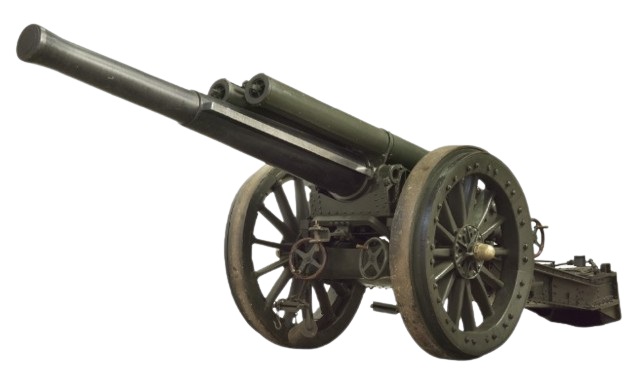
The US used the French Canon de 155 mm 1917 GPF as a long range medium field gun that was designated as the 155 mm Gun M1917. US built versions were referred to as the 155 mm Gun M1918.
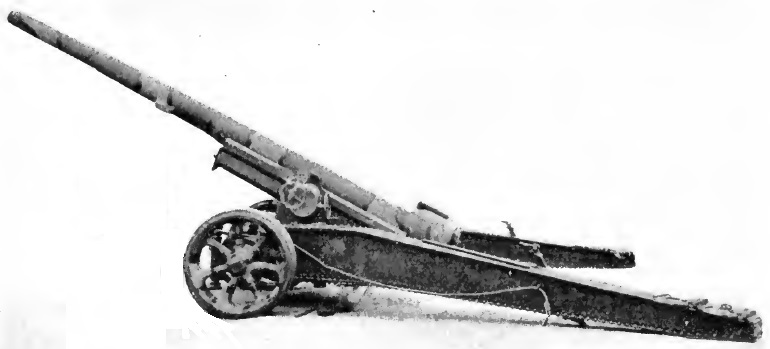
The US used the French Canon de 155 C Mle 1915 Schneider as a medium howitzer that was designated as the 155 mm Howitzer M1917. The US manufactured version were designated the 155 mm Howitzer M1918.
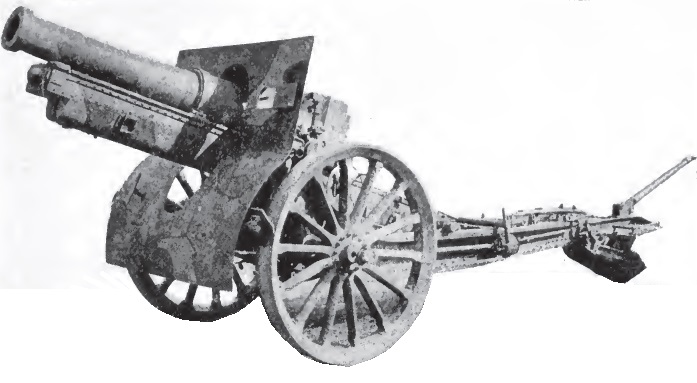
The US used the British BL 8-Inch Howitzer as a heavy field howitzer that was referred to as the 8-Inch Howitzer (Vickers). It was used in Mks VI, VII and VII 1/2 forms.

The US used the British 9.2-Inch BL Howitzer as a heavy field howitzer that was referred to as the 9.2-Inch Howitzer (Vickers) in both Mk I & 2 forms.
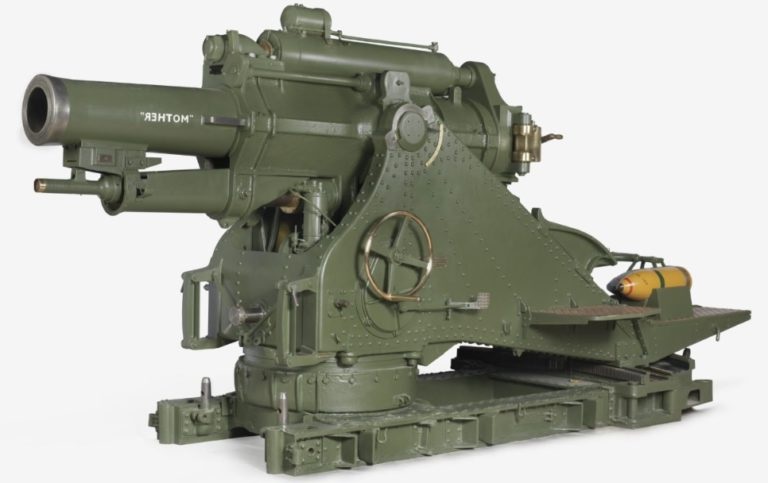
The US also used a version of the French Mortier de 280 Mle 1914 Schneider specially reduced to 240 mm calibre and manufactured in the US and designated the 240 mm Howitzer (Schneider).
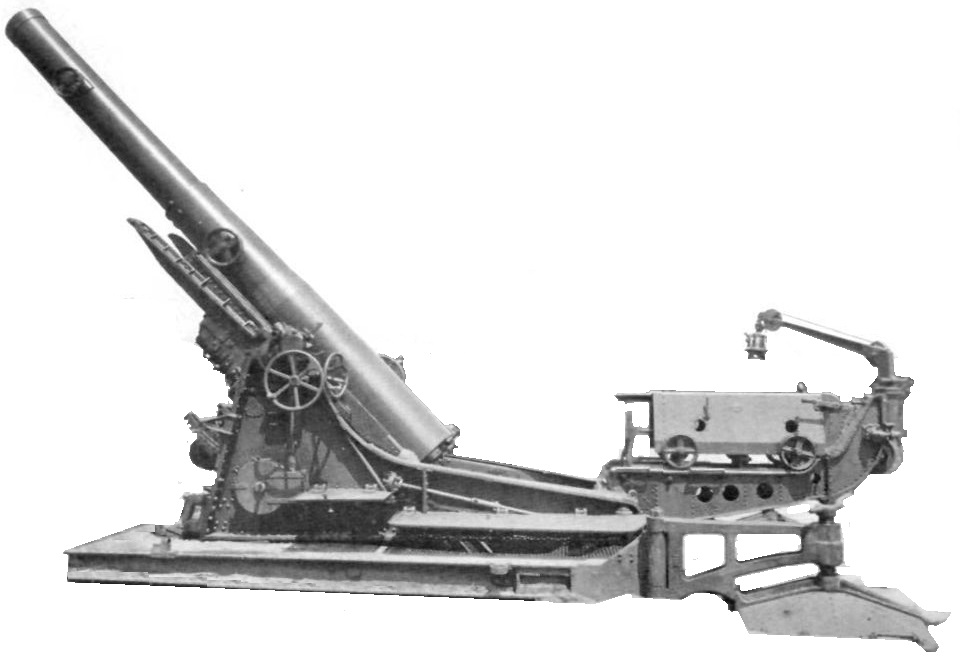
![]()

